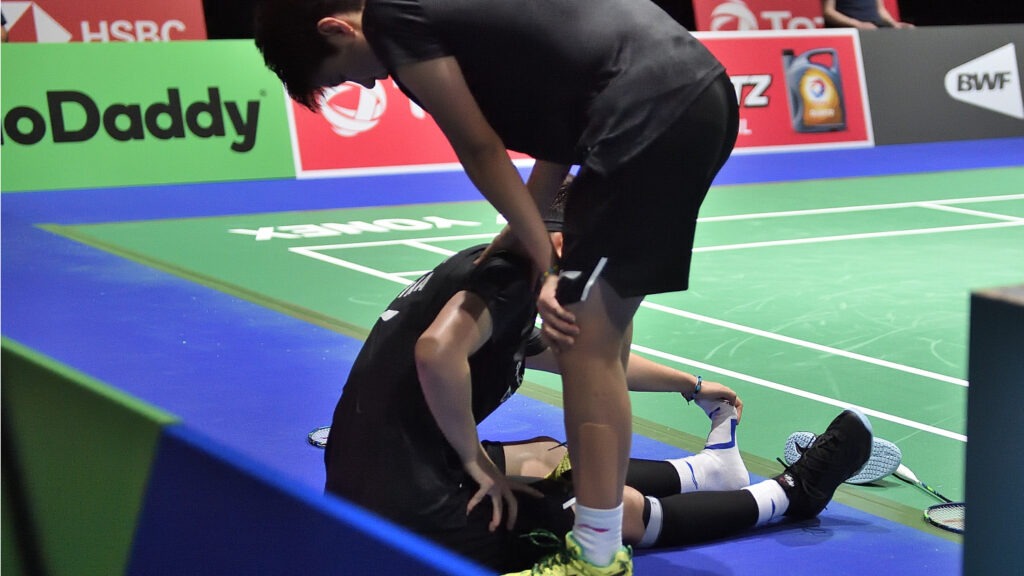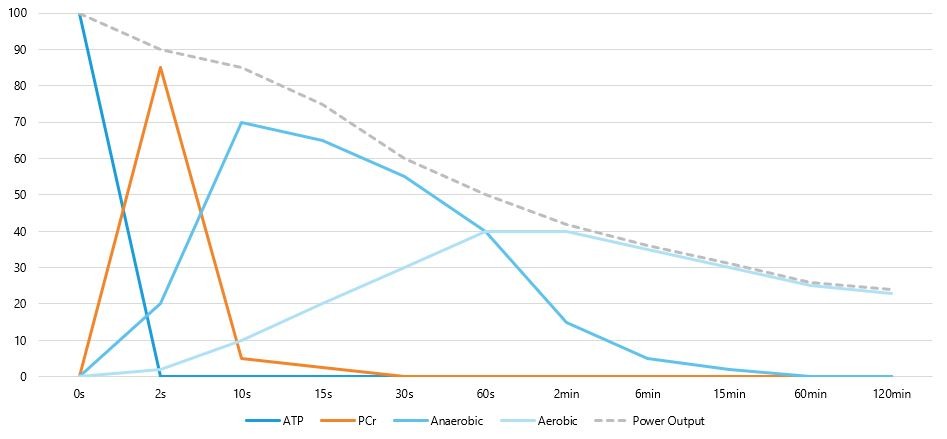How can I train my fitness for badminton? Should I go running? What can I do so I do not loose my speed in the third game? There are tons of different questions, that players ask about endurance and fitness in badminton. So I decided to start a series of articles to take on those questions, and to give a better understanding of how endurance training for a badmintonplayer should look like.
The Energy in our body
First of all we must understand, what are the limiting factors in terms of endurance and in this first part I want to give a short overview over the different energy systems in our body and in what way they are relevant for us in badminton.
Every movement needs energy to contract our muscles, and that Energy that our muscles use comes from a high-energy compound called ATP (Adenosintriphosphat). ATP is stored in our muscles and a chemical reaction that splits ATP into ADP (Adensoindiphosphat) and one phosphat molecule releases the energy that our muscle needs. But our ATP store is really small, just enough for 2-3 seconds of high intensity work. Fortunately we also have other “energy tanks” in our body, that can rebuild ATP and allow us to continue with sporting activities.
The different Energy Systems
There are differnt sources of Energy and different chemical processes but to make it a little bit easier we can differentiate between three big energy systems:
- The anaerobic alactic system
- The anaerobic lactic system
- The aerobic alatcic system

The anaerobic alactic system
Let’s start with the first system. I already said, that we have a small amount of ATP in our muslces that we can use for high intensity work for a very short time. Besides that, we also have another very fast energy source, the so called PhosphoCreatin or short PCr. PCr can rebuild ATP very quickly, so it also allows to work at a very high intensity or pace, but after around 10 seconds of maximum intensity work it is also almost completly depleted. Getting energy that way works without the usage of Oxygen (=anaerobic) and it doesn’t produce lactic acid in our musles (=alactic – What that means and more about lactic acid in a second).
The anaerobic alactic system is important for short intervals with very high intensity so for example a quick sprint but also an average ralley in badminton with a couple of quick starts, lunges and jumps.

The anaerobic lactic system
When we still want to continue our activitie when PCr stores are empty, we have to use the next system, the anaerobic lactic system. Now we mainly get our energy from the breakdown of glycon, the stored form of carbohydrates in our muscles and our liver. As you can probably already guess from the name that system also works without the use of oxygen (anaerobic) but it results in the formation of lactic acid (=lactic) which is converted to the well known and infamous lactate. That system can also provide you with a quite high amount of energy for up to around 2 minutes.
When you run a long time on that system, for example at a 400m sprint or when you do intervals with high intensity and short breaks, lactic acid will accumulate in your muscles and can cause you to stop your activity and lead to fatigue and a burning feeling in your muscles. But lactate is not bad per se, as many people think. The body can also use lactate to rebuild ATP and well trained atheltes are also able to handle high amounts of if. But more about that when we dive more into the practical part about training the different systems.

The aerobic alactic system or oxydative system
For activities over two minutes the aerobic or so called oxydative system becomes the dominant source of energy. Now Oxygen (O²) is involved in the processes, that now produces ATP with a slower rate (=you have to lower the intensity) but without the formation of lactic acid.
For that process the body can use glycogen for up to 30 minutes, than the glycogen stores are depleted. After that fat becomes the main energy source to rebuild ATP. The aerobic system is the most efficient one when it comes to longer periods of work, so we can run on that source for many hours, but as i mentioned above, only with low intensity compared to the other two systems.
Even though you can differentiate between those three systems, it is very important to understand, that they are always running at the same time simultanously, but the duration and intensity of what you are doing decides, what system is dominant. The following graph shows, which system is used primarily at what time and what power output it allows:

If you would like to dive a little deeper into the topic of endurance I can recommend you the following books, that will not only provide you with insights on the energy systems but also the most important things about strength, speed and the planning and periodization of your training in general:
In the second part we will have a closer look at the demands that badminton and its high intensity intervals put onto those systems and energy stores and we will take on the question how useful running is for a badminton player to improve his or her endurance.






